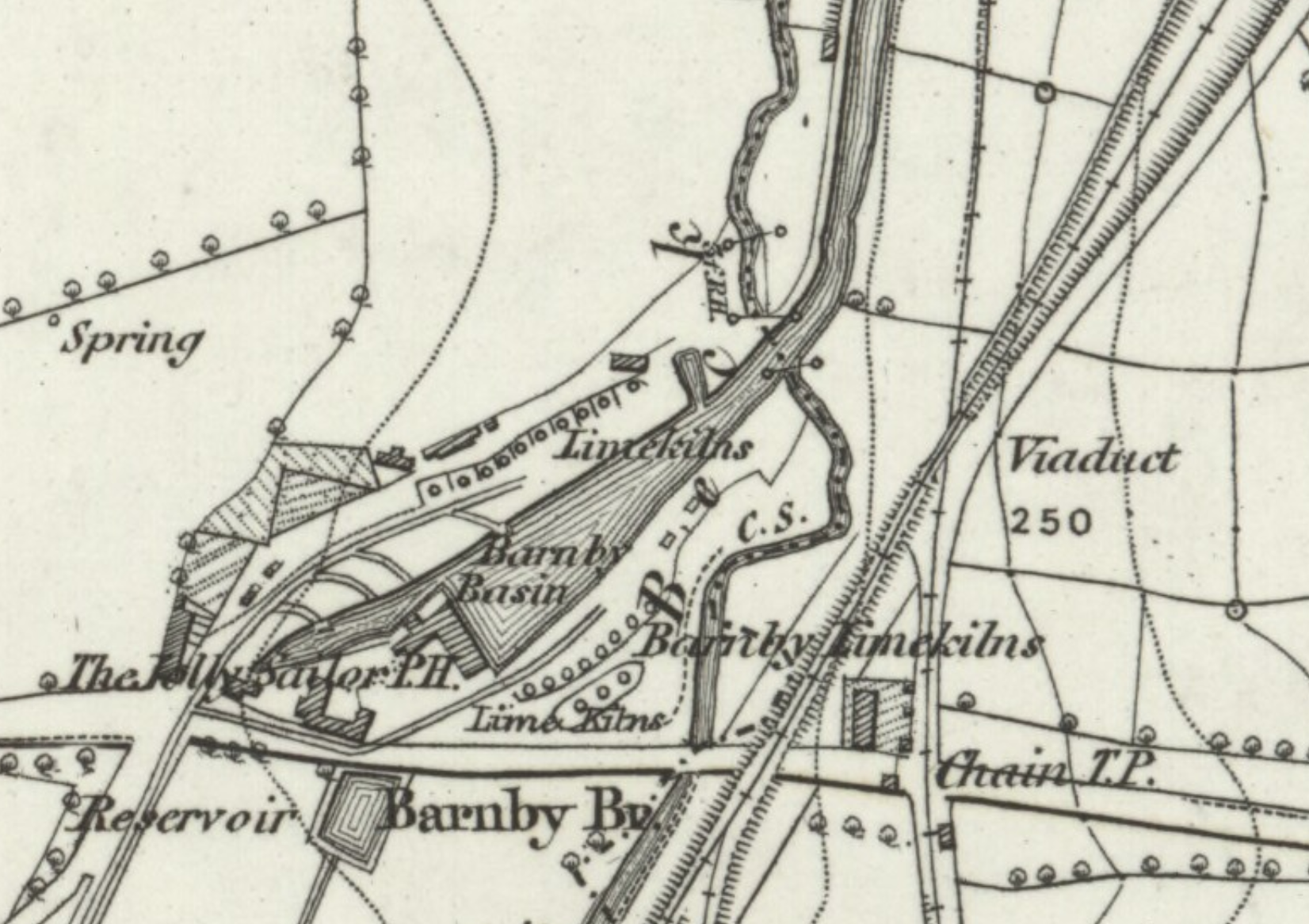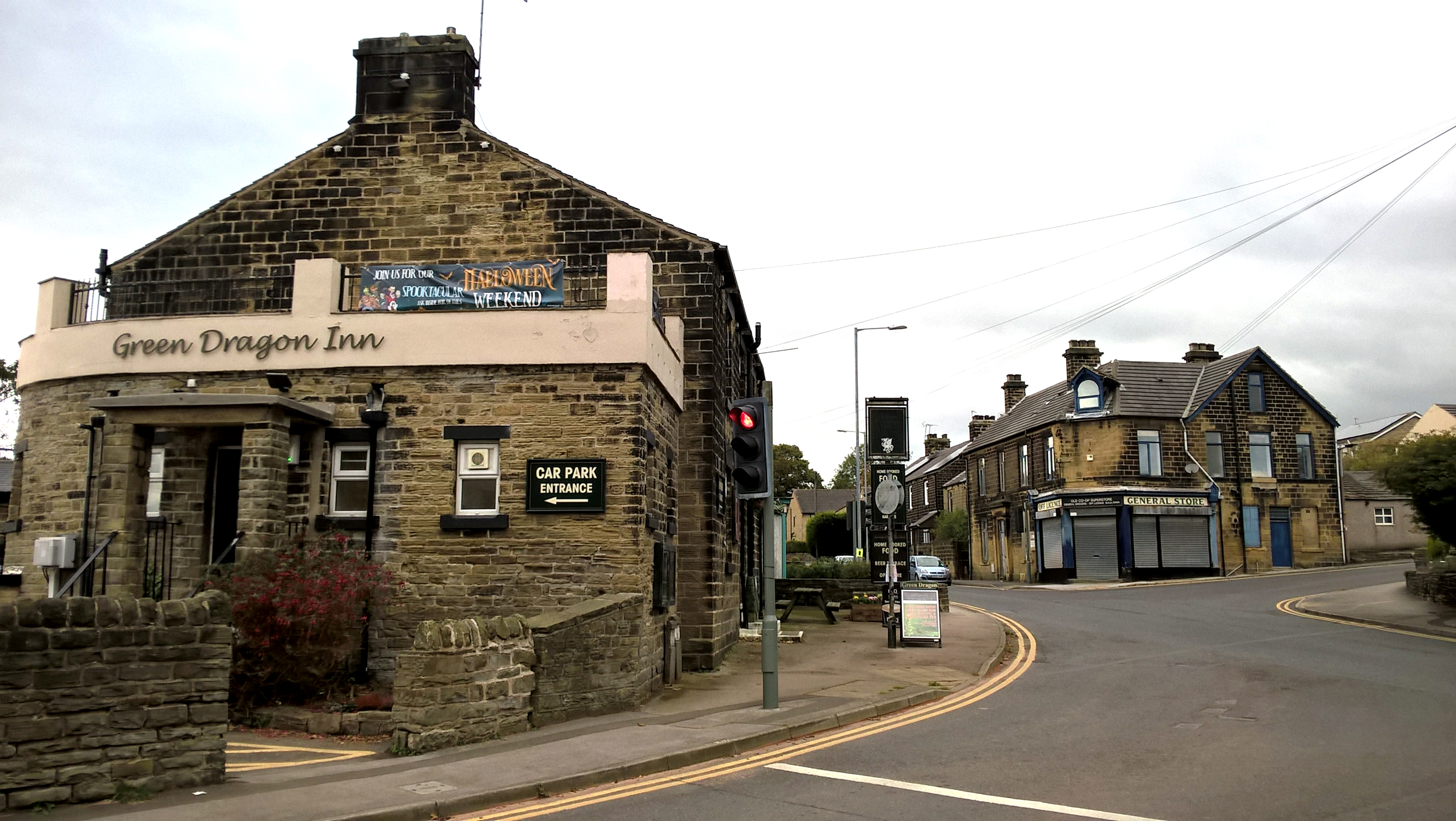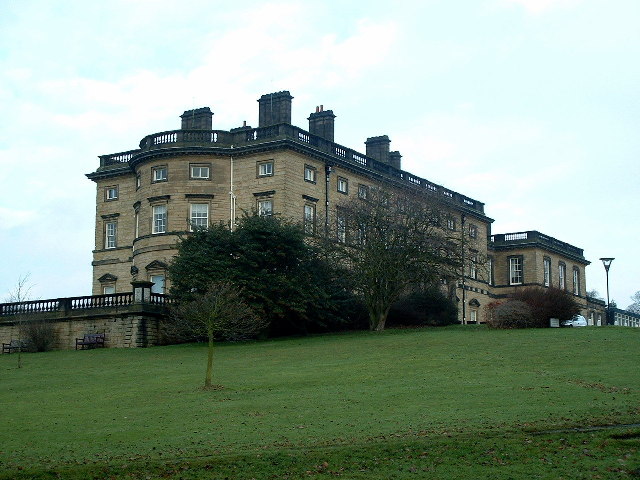|
Silkstone
Silkstone is a village and civil parish in the Metropolitan Borough of Barnsley in South Yorkshire, England. It is situated in the foothills of the Pennines, between the towns of Barnsley and Penistone. The parish includes the village of Silkstone Common. At the 2001 census it had a population of 2,954, increasing to 3,153 at the 2011 Census. Silkstone Parish is twinned with Saint-Florent-des-Bois in France. History The name ''Silkstone'' is Old English in origin and is thought to derive from the Anglo-Saxon man's name ''Sylc'' and the suffix ''tūn'' meaning a farmstead, giving "Sylc's farmstead". The earliest known written record of Silkstone is the Domesday Book of 1086, when Silkstone is referred to as a part of the manor of Cawthorne: In Calthorne (Cawthorne) Ailric had three carucates of land to be taxed and there may be two ploughs there. The same now has it of Ilbert; himself two ploughs there, and four villanes with two ploughs. There is a vicor and a church, ... [...More Info...] [...Related Items...] OR: [Wikipedia] [Google] [Baidu] |
Silkstone Waggonway
The Silkstone Waggonway was a narrow-gauge industrial wagonway serving the Barnsley Canal, in England, at Silkstone in South Yorkshire. History The Barnsley Canal The Barnsley Canal was built in the 1790s to carry coal from the mines near Barnsley to the Aire and Calder Navigation near Wakefield. In 1808, the canal company's Annual General Meeting approved a plan to build a waggonway, and they applied to Parliament for an Act authorising the construction of a horse-drawn railway from Silkstone Cross to the canal's southern terminus at Barnby Basin. The Act was granted. Construction The canal company purchased the trackbed of the earlier Low Moor Waggonway. Construction of the new waggonway proceeded quickly and it opened in 1809. The success of the waggonway as a feeder to the canal prompted the construction of furnaces at Low Mill, and the opening of the Waterloo Colliery. In 1812, the Norcroft Colliery was connected to the waggonway. Extension In the 1830s, an ext ... [...More Info...] [...Related Items...] OR: [Wikipedia] [Google] [Baidu] |
Pot House Hamlet
Silkstone glassworks is situated at Pot House Hamlet, a historic former industrial site in Silkstone, South Yorkshire, England. A glass works was established at Silkstone around 1659 by John Pilmey, who had emigrated from France some years earlier. The glassworks had two furnaces, one for green glass and the other for white. Pilmey married Abigail Scott at Silkstone in 1658. Later she was one of the signatories who successfully petitioned Parliament against the Glass Tax in 1696. Her death is recorded on William Scott's gravestone in the North Aisle of Silkstone Church. In 1718, John Warburton, when preparing his map of Yorkshire, noted as he passed Silkstone Church "pass a rill at the bottom the glass house on the right." The remains of the glassworks and pottery were excavated by English Heritage in 2003, and the site was subsequently protected as a scheduled monument In the United Kingdom, a scheduled monument is a nationally important archaeological site or histo ... [...More Info...] [...Related Items...] OR: [Wikipedia] [Google] [Baidu] |
Silkstone Common
Silkstone Common is a village in the metropolitan borough of Barnsley in South Yorkshire, England. The village has Junior and Infants Schools, a railway station, a single local shop and the Station Inn. One of the most notable events in the history of the village was the Huskar Pit Huskar Pit was a coal mine on the South Yorkshire Coalfield, sunk to work the Silkstone seam. It was located in Nabs Wood, outside the village of Silkstone Common, in the then West Riding of Yorkshire. It was connected to the Barnsley Canal by ... Disaster, which occurred on 4 July 1838 when a freak storm flooded part of the mine, killing 26 children; the youngest was 7 years, the oldest 17. A historical account of this event has been documented in the book entitled ''Children of the Dark''. Notable buildings include Knabb's Hall which was built in late 17th century for William and Elizabeth Wood of Wortley Forge, and the Old Station House, a building located directly beside the railway line w ... [...More Info...] [...Related Items...] OR: [Wikipedia] [Google] [Baidu] |
Church Of All Saints, Silkstone
The Church of All Saints is the parish church in the village of Silkstone in South Yorkshire, England. It is a Church of England church in the Diocese of Leeds. The building is Grade I listed and dates back to at least the 12th century. History There may have been a church on this site in Saxon times, but the current perpendicular style building was originally constructed in the 12th century. The building was remodelled in 1495, and the chancel was rebuilt in 1852–1858. The church contains a ring of 6 bells. See also *Grade I listed buildings in South Yorkshire There are 62 Grade I listed buildings in South Yorkshire, England. In the United Kingdom, the term listed building refers to a building or other structure officially designated as being of special architectural, historical or cultural significan ... * Listed buildings in Silkstone References Grade I listed churches in South Yorkshire Church of England church buildings in South Yorkshire 12th-century church bui ... [...More Info...] [...Related Items...] OR: [Wikipedia] [Google] [Baidu] |
Dodworth
Dodworth is a village in the metropolitan borough of Barnsley in South Yorkshire, England. Historically part of the West Riding of Yorkshire, it has a population of 5,742, increasing to 5,900 at the 2011 Census (9,777 for Dodworth Ward). History Dodworth was historically a township in the ancient parish of Silkstone in the West Riding of Yorkshire. It became a separate civil parish in 1866, and an urban district in 1894. The urban district and civil parish were abolished in 1974, when Dodworth was transferred to the Metropolitan Borough of Barnsley in the new county of South Yorkshire. Dodworth is now an unparished area. Dodworth is a former coal mining village with approximately 5,800 people. The land occupying the former pit is now the Dodworth Business Park. The "muck" stack from the pit is clearly visible throughout the village. During the early 1980s a mass planting of silver birch trees began to halt erosion and create a wildlife habitat. Over the past twenty years, tree ... [...More Info...] [...Related Items...] OR: [Wikipedia] [Google] [Baidu] |
Thurgoland
Thurgoland (, ) is a village and civil parish in the Metropolitan Borough of Barnsley in South Yorkshire, England, on the A629 road. According to the 2001 census the parish had a population of 1,801, increasing to 1,969 at the 2011 Census. Buildings The village has one primary school, and Holy Trinity Church, Thurgoland (Church of England), built in 1870. There are four public houses: The Monkey, The Horse & Jockey, The Green Dragon and The Bridge Inn. There are several listed buildings on Huthwaite Lane, including Huthwaite Hall (1748) designed by John Carr. There is a recreational ground at the centre of the village, by the village hall and the youth centre. Thurgoland Junior School is ranked second in the local league table. History The earliest known written record of Thurgoland is in the Domesday Book of 1086, in which it is referred to as ''Turgesland''. The name is of Old Norse origin and may mean 'Cultivated land of a man called Thorgeirr'. Other sources claim ... [...More Info...] [...Related Items...] OR: [Wikipedia] [Google] [Baidu] |
West Bretton
West Bretton is a village and civil parish near Barnsley, West Yorkshire, England. It lies close to junction 38 of the M1 motorway at Haigh. It has a population of 546, reducing to 459 at the 2011 Census. There is a school in the village, West Bretton Junior and Infant School, and a church, which is an Anglican-Methodist local ecumenical partnership. History Toponymy Bretton derives from the Old English ''Brettas'', the Britons and ''tūn'' meaning an enclosure, farmstead, village or estate. The Briton's farm or settlement was recorded as ''Bretone'' in the ''Domesday Book'' of 1086 and ''West Bretton'' in 1200. Manor This part of Yorkshire was laid waste in the Harrying of the North after the Norman conquest of England. Most of West Bretton was granted to the de Lacys, lords of the Honour of Pontefract by William I and a small part to the Manor of Wakefield. After the devastation, growth was slow but more land was eventually cultivated to sustain a growing population. A ... [...More Info...] [...Related Items...] OR: [Wikipedia] [Google] [Baidu] |
Metropolitan Borough Of Barnsley
The Metropolitan Borough of Barnsley is a metropolitan borough in South Yorkshire, England; the main settlement is Barnsley and other notable towns include Penistone, Wombwell and Hoyland. The borough is bisected by the M1 motorway; it is rural to the west, and largely urban/industrial to the east it is estimated that around 16% of the Borough is classed as Urban overall with this area being home to a vast majority of its residents. Additionally 68% of Barnsley's 32,863 hectares is green belt and 9% is national park land, the majority of which is west of the M1. In 2007 it was estimated that Barnsley had 224,600 residents, measured at the 2011 census as 231,221, nine tenths of whom live east of the M1. The borough was formed under the Local Government Act 1972, by a merger of the county borough of Barnsley with Cudworth, Darfield, Darton, Dearne, Dodworth, Hoyland Nether, Penistone, Royston, Wombwell and Worsborough urban districts, along with Penistone Rural District, pa ... [...More Info...] [...Related Items...] OR: [Wikipedia] [Google] [Baidu] |
Barnsley
Barnsley () is a market town in South Yorkshire, England. As the main settlement of the Metropolitan Borough of Barnsley and the fourth largest settlement in South Yorkshire. In Barnsley, the population was 96,888 while the wider Borough has seen an increase of 5.8%, from 231,200 in 2011 census to 244,600 in 2021 census. Historically in the West Riding of Yorkshire, it is located between the cities of Sheffield, Manchester, Doncaster, Wakefield, and Leeds. The larger towns of Rotherham and Huddersfield are nearby. Barnsley's former industries include linen, coal mining, glassmaking and textiles. These declined in the 20th century, but Barnsley's culture is rooted in its industrial heritage and it has a tradition of brass bands, originally created as social clubs by its mining communities. The town is near to the M1 motorway and is served by Barnsley Interchange railway station on the Hallam and Penistone Lines. Barnsley has competed in the second tier of En ... [...More Info...] [...Related Items...] OR: [Wikipedia] [Google] [Baidu] |
John Charles Brooke
John Charles Brooke (27 August 1748 – 3 February 1794) was an English antiquarian who served as Somerset Herald from 1777 until his death. Early life Brooke was born at Fieldhead in the parish of Silkstone, Yorkshire in August 1748, the second son of Dr. William Brooke by his wife Alice Mawhood. He was a descendant of the Rev. John Brooke, Rector of High Hoyland, who had himself - in the previous century - been an antiquarian interested in the history of Yorkshire. John Charles Brooke eventually came into possession of some of the historical material collected by Rev. Brooke, and thus his "taste for historical and genealogical research" was "perhaps inherited." Brooke was sent by his parents to London to be apprenticed to James Kirkby, a chemist at Holborn. However "after discovering a strong turn to heraldic pursuits" he attracted the attention of Edward Howard, the future 9th Duke of Norfolk (the holder of which title is hereditary Earl Marshal in charge of the College o ... [...More Info...] [...Related Items...] OR: [Wikipedia] [Google] [Baidu] |
Saint-Florent-des-Bois
Saint-Florent-des-Bois () is a former commune in the Vendée department in the Pays de la Loire region in western France. On 1 January 2016, it was merged into the new commune of Rives-de-l'Yon. 28 December 2015 It is located on the periphery of La Roche-sur-Yon. Twin towns Saint-Florent-des-Bois is twinned with the village of in South Yorkshire, England Geography ...
|
Listed Building
In the United Kingdom, a listed building or listed structure is one that has been placed on one of the four statutory lists maintained by Historic England in England, Historic Environment Scotland in Scotland, in Wales, and the Northern Ireland Environment Agency in Northern Ireland. The term has also been used in the Republic of Ireland, where buildings are protected under the Planning and Development Act 2000. The statutory term in Ireland is "protected structure". A listed building may not be demolished, extended, or altered without special permission from the local planning authority, which typically consults the relevant central government agency, particularly for significant alterations to the more notable listed buildings. In England and Wales, a national amenity society must be notified of any work to a listed building which involves any element of demolition. Exemption from secular listed building control is provided for some buildings in current use for worsh ... [...More Info...] [...Related Items...] OR: [Wikipedia] [Google] [Baidu] |

.jpg)



